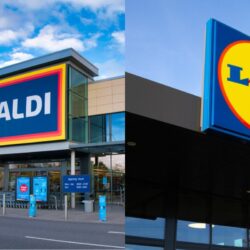The rise of tablet computers and smartphones means customers are now more connected than ever. A recent survey by e-commerce experts ZMags revealed more than 60 per cent of 25 to 34-year-olds now own a smartphone and that 90 per cent of people will use a tablet in the next few years.
Consumers want to communicate with brands in more ways than ever from social media and mobile apps to the physical experience in-store. Retailers are quickly learning that merely selling their products and services is no longer sufficient; they need to make their services available across a number of platforms to keep up with our changing lifestyles.
Marks & Spencer is among those brands which have identified the need to introduce a digital focus to their customer engagement strategy. Last month, the retail chain announced it will launch free Wi-Fi in its stores and equip staff with iPads in an attempt to improve customers‘ shopping experience to boost sales.
Among its plans is the introduction of QR codes to its flagship store in Cheshire Oaks, which will allow customers to access product information using a mobile device. Staff will also be able to ‘enhance the customer experience‘ with a wealth of information at their fingertips thanks to iPads.
Tesco is another retail giant that has recently expressed an interest in improving its digital offerings. The supermarket is considering the possibility of allowing customers to browse its products in 3D aisles and virtual stores because of improved broadband speeds and the rise in Smart TVs.
These moves will allow retailers to create a novel brand experience for customers at a time when people are looking to see innovation in real-life just as much as they are online. It also shows brands are very aware that people want to connect with them through their mobiles and the internet. A recent study by Google revealed nearly 80 per cent of people said they use their phone for shopping and shopping- related activities, and 70 per cent used their phones in stores.
By promoting their merchandise in a digital forum, retailers will have the opportunity to differentiate their offerings, however, they need to be aware of the difference between communicating with customers through their smartphones compared with offline communications. The key to a seamless customer experience and good customer engagement is to make sure the encounter is consistent and is followed up with relevant and engaging information.
The digital revolution has presented customers with a huge range of platforms to interact with brands and so they expect to be able to flitter from one touchpoint to the other in a smooth and seamless way. They expect an experience that is connected, consistent and personalised throughout their shopping journey, whichever platform they use.
It is vital for brands to use the same information about merchandise, consumers, deals and pricing across all of their consumer touchpoints. So many brands struggle to present shoppers with a connected experience, which may have a detrimental effect on the way that brand is perceived.
Presenting people with disparate information can lead to a confused brand message. A disconnected message can quickly frustrate, upset or anger consumers, which may lead to missed opportunities, revenues and reduced customer loyalty.
For any brand there is a natural desire to be seen leading from the front on new technologies, but they need to ensure the technology being introduced serves its purpose. To this end it needs to deliver a seamless customer experience, which means consistent, relevant and engaging messaging across all touchpoints.

















